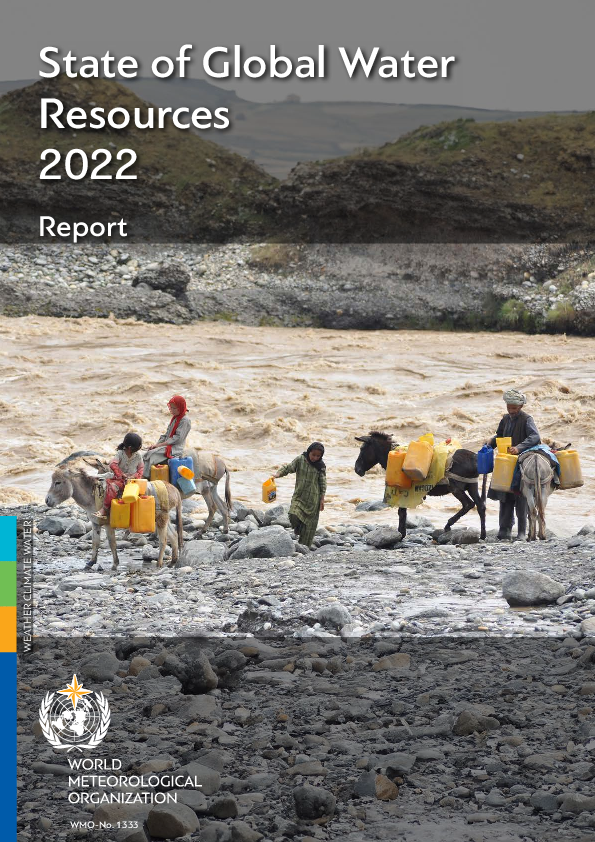- Share this article
- Subscribe to our newsletter
State of Global Water Resources 2022
The hydrological cycle is spinning out of balance as a result of climate change and human activity. This is shown by the State of Global Water Resources Report 2022, which was published by the World Meteorological Organization (WMO) in October 2023.
Droughts and extreme rainfall events are taking a heavy toll on lives and economies. Melting snow, ice and glaciers have increased hazards like floods and threaten long-term water security of many millions of people.
And yet, far too little is known about the true state of the world’s freshwater resources. We cannot manage what we do not measure, says the report, and it calls for a fundamental policy shift.
The report builds on a pilot published last year. It contains more information on important hydrological variables such as groundwater, evaporation, streamflow, terrestrial water storage, soil moisture, the cryosphere (frozen water), inflows to reservoirs, and hydrological disasters. It integrates field observations, satellite-based remote sensing data and numerical modelling simulations in order to assess water resources at the global scale.
Assessment of water resources
The report gives an independent and consistent global-scale quantitative assessment of water resources in large river basins in comparison to the long-term average across various variables including river discharge, groundwater, evaporation, soil moisture and inflow to reservoirs.
In 2022, over 50 per cent of global catchment areas experienced deviations from normal river discharge conditions. Most of these areas were drier than normal, while a smaller percentage of basins experienced more or much more discharge than normal. This was similar to 2021. More than 60 per cent of major water reservoirs saw below-normal or above-normal inflow. This presents a challenge in terms of providing water to all users in an increasingly variable climate.
Throughout 2022, anomalies in soil moisture and evaporation echoed those in river discharge conditions.
Unprecedented levels of glacier mass loss
The Third Pole, which encompasses the Tibetan Plateau, the Himalayas, the Karakorum, the Hindu Kush, the Pamirs and the Tien Shan Mountains, is vital to the water supply of almost 2 billion people. From 2000 to 2018, total glacier mass decreased by more than 4 per cent. There has been a notable decrease in snow cover, and a big increase in the volume of glacial lakes.
In 2022, the snow cover in the Alps, crucial for feeding major rivers like the Rhine, Danube, Rhone, and Po, remained much lower than average. The European Alps witnessed unprecedented levels of glacier mass loss.
The subtropical Andes have experienced a consistent decline in winter snow accumulation since 2009, impacting water supplies for cities across Chile and the west of Argentina. Although 2022 saw slightly above-average snow in some areas, key watersheds still reported below-average conditions, especially on the Argentinean side, leading to sustained water restrictions in populous urban centres.
(WMO/ile)
Read more on the WMO website





Add a comment
Be the First to Comment